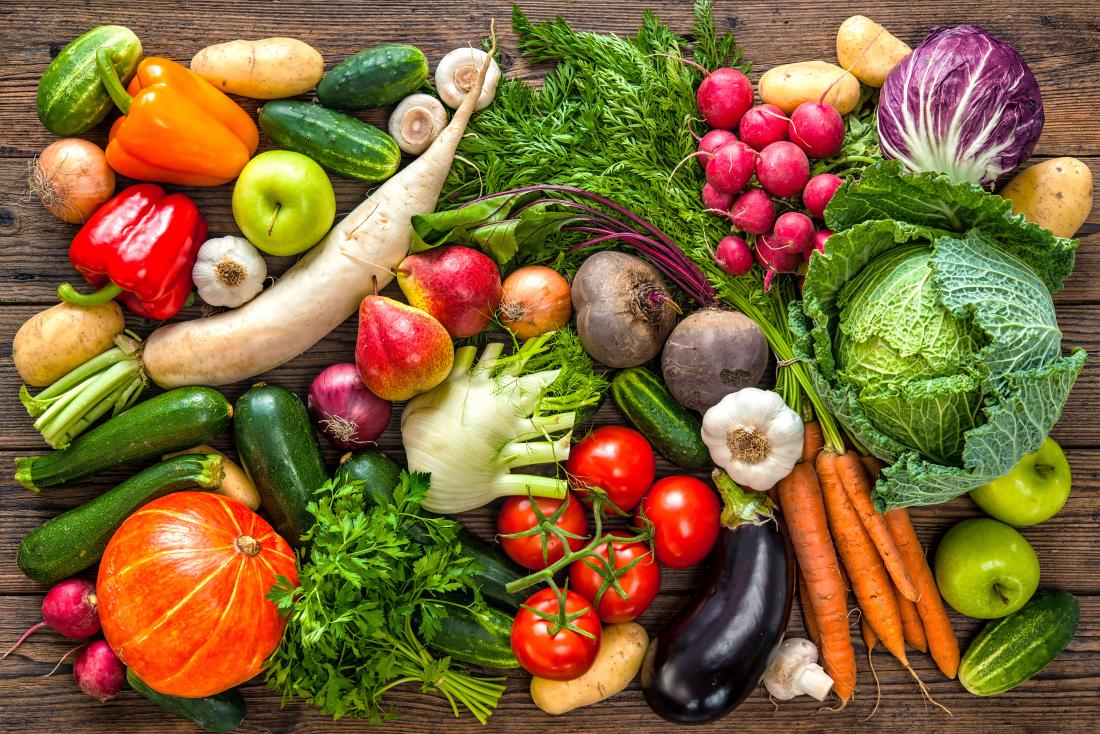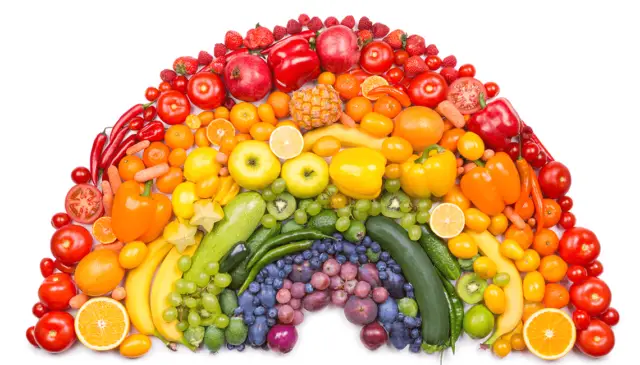When it comes to the “Color Diet” it is thought that every color that this diet assigns to specific foods is because of the same color, this is not so, it has a different meaning. Rather it goes as follows: “Red” is for proteins, “Green” for vegetables, “Yellow” for sugars and carbohydrates, “Brown” is for fats and “Blue” is for those that have Anthocyanins.

This classification highlights what foods should go with each color code, that is:
Red: beans, ox, pork, rabbit, chickpeas, beans, lentils, sea bass, turkey without the skin, sardine, veal and skimmed yogurt.
Green: chard, artichokes, celery, watercress, broccoli, zucchini, spinach, lettuce, radishes, tomatoes, and leek.
Yellow: eggplant, plum, strawberries, figs, green beans, tangerine, mango, loquat, pineapple, banana, and carrot.
Brown: raw olive oil, olives, avocado, almonds, peanuts, mayonnaise, nuts, and sunflower seeds.
Blue: caper, mustard, oregano, parsley, decaffeinated coffee, tea, vinegar, and thyme.
Benefits of this diet.

Among the main benefits is the high doses of antioxidants and fibers that protect the cells from some attacks of free radicals, prevents cholesterol through improved blood circulation thus preventing cardiovascular diseases, due to their high doses of fibers and prevent various types of cancer, not to mention their nutritional potential.
You can also find other benefits, such as the presence of beta-carotene, necessary to maintain the health of the skin and with high purifying power, that is eliminating waste or toxins from the body. Increasing defenses and the immune system, improved endurance and stamina, maintaining strong bones and teeth, better vision. and many other benefits that are in favor of the general health of people who follow it.
As the rule of the diet is to eat colorful foods, the person can enjoy having a nutritious menu including fruits and vegetables, when fulfilling it at an optimal rate, that is, respecting a sequence of tones, which are established according to the characteristics of each meal the results are effective and can be seen in a week.
Some disadvantages.
As can be the case with any other diet, if not taken into account a supervised, well balanced eating plan, and not consuming sufficient dairy, meat, fish and poultry, it may become more difficult to obtain some essential proteins that are vital to maintain and repair muscle tissue and manufacture blood cells, antibodies, hormones and enzymes. There may also be the possibility of vitamin and mineral deficiencies, for example, vitamin B12 (necessary for the system nervous), calcium (for strong bones, among other functions), iron (for the blood) and zinc (for immunity and ease of cure of certain diseases), all this can put in jepordy some people’s health.

